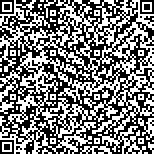| 李 娜,肖海帆,颜仕鹏.2019—2020年湖南省城市居民结直肠癌筛查参与率、病变检出率及其影响因素分析[J].中国肿瘤,2021,30(8):600-607. |
| 2019—2020年湖南省城市居民结直肠癌筛查参与率、病变检出率及其影响因素分析 |
| Participation and Detection Rate and Influencing Factors of Colorectal Cancer Screening Program in Urban Areas of Hunan Province from 2019 to 2020 |
| 中文关键词 修订日期:2021-04-07 |
| DOI:10.11735/j.issn.1004-0242.2021.08.A005 |
|
 |
| 中文关键词: 结直肠癌 筛查 参与率 检出率 风险因素 湖南 |
| 英文关键词:colorectal cancer screening participation detection rate risk factor Hunan |
| 基金项目:湖南省肿瘤医院“科研攀登计划”重大专项(ZX2020005/ZX2020005-1);湖南省卫生健康委科研计划项目(20201476) |
|
| 摘要点击次数: 1776 |
| 全文下载次数: 484 |
| 中文摘要: |
| 摘 要:[目的] 分析湖南省城市癌症早诊早治项目中部分结直肠癌高危人群的结肠镜检查参与率和病变检出情况及其相关影响因素。[方法] 基于2019—2020年湖南省城市癌症早诊早治项目,纳入部分符合研究要求的45~74岁受试者。所有受试者均接受流行病学问卷调查并进行癌症风险评估,推荐评估结果为结直肠癌高风险的人群在项目医院进行结肠镜检查。采用χ2检验比较一般人群和结直肠癌高危人群的特征差异;采用Logistic回归模型分析与结肠镜检查参与率相关的影响因素以及与结肠肿瘤检出率相关风险因素。[结果] 22 893名筛查目标人群中,1 926名被判定为结直肠癌高风险,高风险率为8.4%。523名高风险人群按照研究要求接受了结肠镜检查,参与率为27.2%。多因素Logistic回归分析结果提示年龄、吸烟史、运动习惯和肠道疾病家族史是结肠镜检查参与率的影响因素。523名接受结肠镜检查的受试者中检出各类结直肠肿瘤142例(27.2%)。 多因素Logistic回归分析结果提示年龄和吸烟史是结直肠肿瘤检出率的影响因素,与45~49岁人群相比,60~64岁(OR=2.90,95%CI:1.25~7.22)以及65~69岁(OR=2.93,95%CI:1.24~7.43)人群结肠镜肿瘤检出率显著升高;与不吸烟人群相比,吸烟或已戒烟的人群(OR=1.90,95%CI:1.10~3.36)结肠镜肿瘤检出率更高。[结论] 湖南省城市地区高危人群的结直肠癌筛查参与率仍处于较低水平,但在高危人群开展结肠镜筛查可检出较高比例的结直肠肿瘤,取得了较好的筛查效果。在未来的人群结直肠癌筛查项目中,对特定高风险群体开展健康宣教,提高其防癌健康素养和筛查参与率是亟待解决的关键问题。 |
| 英文摘要: |
| Abstract: [Purpose] To analyze the participation and detection rate for colorectal cancer screening and associated factors in a population-based colorectal cancer(CRC) screening program in urban areas of Hunan Province. [Methods] Based on the Cancer Screening Program in Urban China conducted in Hunan Province from 2019 to 2020, eligible participants aged 45~74 years were included in the study. All participants took epidemiological questionnaire survey to evaluate their cancer risk, and those who were evaluated as“high risk of CRC” were recommended to undertake colonoscopy examination in designated hospitals. Colonoscopy reports and/or pathology reports were collected. The Chi-square tests were used to compare the differences of the characteristics between general population and high-risk population of CRC. Multivariate Logistic regression models were used to explore the factors influencing the participation and detection of colorectal neoplasm. [Results] A total of 1 926 individuals out of 22 893 invited participants were evaluated as high risk of CRC with a high-risk rate of 8.4%, and 523 of 1 926 undertook screening colonoscopy following the study protocol with an overall participation rate of 27.2%. Multivariate Logistic regression analysis showed that age, smoking history, physical activity and family history of CRC among the first-degree relatives were associated with the participation rate of colonoscopy. The detection rate of colonoscopy neoplasm(including CRC, advanced adenoma and non-advanced adenoma) in the high-risk population undergoing colonoscopy examination was 27.2%. Multivariate Logistic regression analysis showed that age and smoking history were significantly associated with the detection for colorectal neoplasm. Compared with individuals aged 45~49 years, individuals aged of 60~64 and 65~69 years had significantly higher detection rate of colorectal neoplasms (OR=2.90, 95%CI:1.25~7.22; OR=2.93, 95%CI:1.24~7.43); compared with non-smokers, current smokers or former smokers had significantly higher detection rate of colorectal neoplasms(OR=1.90, 95%CI:1.10~3.36). [Conclusion] The participation rate of CRC screening in the high-risk population in Hunan urban areas is relatively low. However, detection rate of colorectal neoplasms in high-risk population is relatively high with satisfying screening efficacy. It will be essential to carry out health promotion campaign targeting specific groups with the aim of enhancing the awareness and participation of screening. |
|
在线阅读
查看全文 查看/发表评论 下载PDF阅读器 |